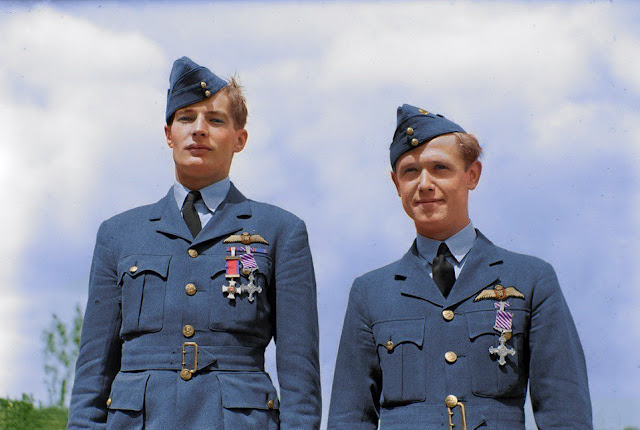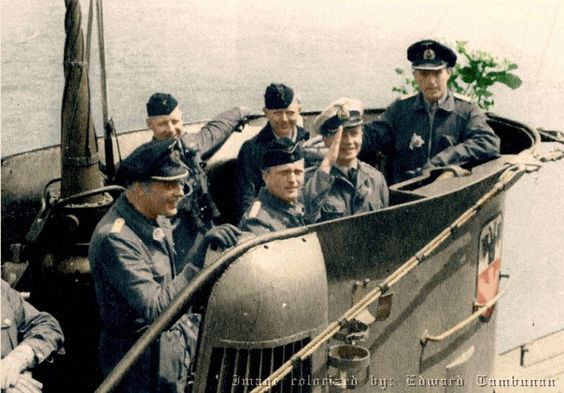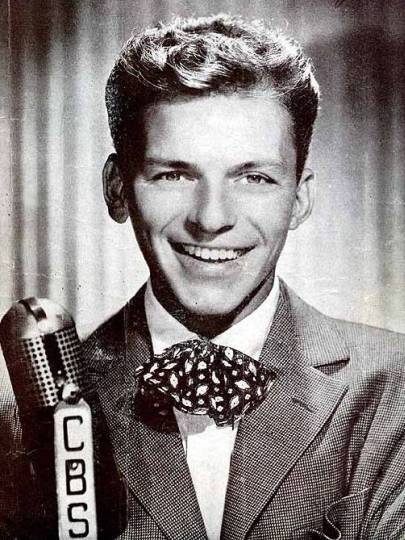Saturday 27 July 1940
 |
| Bugs Bunny is born today, 27 July 1940. |
General Wolfram von Richthofen's Fliegerkorps VIII is in the air and over the convoy by 09:45. There are several convoys in the vicinity, two forming up in the Thames estuary. Heinkel He 111s of KG 53 join the attack and sink the Wren (37 deaths) of the 18th Destroyer Flotilla whilst also damaging HMS Montrose (lost her bow, had to be towed to Harwich).
The RAF gets several squadrons in the air (RAF Nos. 145, 238, and 609) to defend. The RAF shoots down at least one Stuka and Bf 109, with additional possible victories, at a cost of one Spitfire from 609 Squadron.
 |
| Flight Lieutenant R.H.A. Lee and Flying Officer K.H. Blair after being awarded the DSO and the DFC, respectively, by King George VI. The photo was taken at RAF Hornchurch, Essex, on July 27, 1940. |
The Luftwaffe launches massive attacks against Dover as well. There, HMS Codrington goes down and destroyer HMS Walpole is badly damaged. The attack is notable because, for the first time, Bf 109s are equipped with bomb racks that enable them to operate as ground-attack ("Jagdbomber" or "Jabo") fighter-bombers. This type of raider is particularly dangerous because, once the German fighters drop their bombs, they can basically out-run the pursuing RAF fighters back to France - unlike the much-slower Stukas.
The Admiralty concedes defeat and withdraws all destroyers from Dover. This accomplishes a prime objective for Operation Sea Lion, but it is only a benefit if followed up properly - the Admiralty can always bring the destroyers back. The withdrawal places more weight on the RAF to defend convoy ships against both Luftwaffe and German torpedo boat attacks. In addition, the damage to Dover port itself is mounting, and Fighter Command makes protecting it a top priority. Protecting the forward airfields at Manston and Hawkinge becomes more vital than ever.
There are a few more raids during the day, including an attack on Belfast and scattered attacks on shipping. During the night, the Luftwaffe attacks Swansea Docks, Upton-upon-Severn, and Kidwelly (Carmarthen). The Luftwaffe also conducts minelaying operations around Portland and elsewhere on the Channel coast.
The RFA War Sepoy, which has been converted into a blockship at Dover after its extensive damage on the 19th by the Luftwaffe, is still very visible. The Luftwaffe pilots see it and, perhaps thinking it is still operational, pound it repeatedly.
Total losses for the day are said to be four Luftwaffe planes and one RAF plane.
The Luftwaffe gets a little more coordinated by the appointment of a "fighter leader" of Luftflotte 2, the main formation facing England. Luftflotte 2 has the following fighter formations in action:
- JG 3
- JG 26
- JG 51
- JG 52
- JG 54
- ZG 26
European Air Operations: RAF Bomber Command sends 15 bombers to attack various targets in Holland and northwestern Germany, primarily shipping facilities, oil depots and airfields.
RAF Fighter Command begins evaluating the first prototype Beaufighter IF fighters.
Battle of the Atlantic: U-34 (Kapitänleutnant Wilhelm Rollmann) continues stalking convoy OB 188, which is now about 350 miles out into the Atlantic west of Scotland. To add to its totals of the 26th, the U-boat torpedoes and sinks 5,260-ton British freighter Sambre at 02:58 and 10,364-ton British tanker Thiara at 03:13. There are 25 dead on the Thiara, while 36 survive; everybody on the Sambre (48 crew) survives.
British freighter Salvestria hits a mine and sinks in the Irish Sea.
British corvette HMS Clematis (K 36, Commander York McLeod Cleeves) is commissioned.
Convoy OB 190 departs from Liverpool, Convoy HG 40F departs from Gibraltar, Convoy HX 61 departs from Halifax.
U-73 is launched.
 |
| The crew of U-73, launched today at Bremer Vulkan of Bremen-Vegesack, Germany. |
The Italians send a reconnaissance raid over the island at 11:10, losing a fighter to anti-aircraft fire. At 16:40, a couple of Short Sunderland flying boats on patrol find some enemy fighters and shoots down three of the Italian planes. One of the Sunderlands is damaged but makes it back to base.
The incessant air raids are seriously affecting productivity in the dockyard. The government begins pondering moving some operations underground so that the workers do not have to stop for each air raid alert, many of which are either false alarms or for enemy planes that wind up not attacking.
German/Spanish Relations: While there is not much enthusiasm on the Spanish side, the two countries' military staffs begin preliminary planning for Operation Felix: the invasion of Gibraltar. Taking Gibraltar would effectively bottle up the Mediterranean and force all British ships to take the long way around Africa to supply British forces in Egypt.
German/Bulgarian Relations: Adolf Hitler meets with the Bulgarian Premier and Foreign Minister at Berchtesgaden. Hitler tells them that he supports their claim on Romania in southern Dobruja province.
Italian/Romanian Relations: The Romanian Premier and Foreign Minister, having talked with Hitler on the 26th, meet with Mussolini and Italian Foreign Minister Ciano in Rome.
British/Japanese Relations: The Japanese detain eleven British citizens. Such detentions invariably result in diplomatic protests.
 |
| An illustration from the 27 July 1940 "The Illustrated London News" about German bombings. |
Italian Government: Mussolini sets his eyes on expanding his African empire. He and Commando Supremo decide to invade British Somaliland on 3 August. Coordinating with Vichy France, which now is a nominal ally, Mussolini has them withdraw French forces from the key Jirre pass into the country.
British Government: The Admiralty appoints a board of inquiry to look into the reasons why destroyer HMS Effingham hit a rock and sank on 18 May 1940 while performing escort duties near Bodø, Norway.
Barrage balloons and Home Guard observers now cover London. The balloons are raised from parks and other open spaces.
The government imposes a curfew in the restricted zone on the south coast: everyone must be indoors from one hour after sunset to one hour before sunrise. Cars are allowed only one headlight, the other must be covered.
Australian Government: Australian radio reports that 125,000 men have volunteered for the Royal Australian Air Force.
US Government: President Roosevelt, Secretary of the Navy Frank Knox, and Naval Affairs Committee chairman Carl Vinson board the presidential yacht Potomac for a trip to the Norfolk Navy Yard.
Colonel George S. Patton, Jr. takes command of the 2nd Armored Brigade at Fort Benning.
Japanese Government: Prime Minister Konoye's government continues its militaristic stance by deciding to establish military ties with Germany and Italy.
Latin America: The Pan-American conference in Havana, Cuba results in an agreement to protect any European colonies in the region that are attacked by Axis forces. This is known as the Act of Havana.
British Homefront: The Illustrated London News publishes a pictorial guide to German bombing and how to survive it. This is quite timely, because, while London has not yet been bombed, it soon will be.
 |
| Francis Albert Sinatra in 1940. |
Incidentally, while he is not yet given a screen name, Bugs in fact already has been named by his creator, though nobody knows it yet. Ben "Bugs" Hardaway first started drawing a generic rabbit in 1938 and, without thinking about it too much, filed him under "Bugs' Bunny" - as in, his own drawing of a rabbit. The name stuck, and is first used in Bugs' next film in 1941, "Elmer's Pet Rabbit."
 |
| Bugs Bunny as a US Marine in "Super-Rabbit" (1943). |
In other Hollywood news, Warner Bros. releases the classic "They Drive By Night" starring Humphrey Bogart, George Raft and Anne Sheridan.
Also, Billboard Magazine publishes its first list of top records for the week (there have been other services charting how records perform, but this is the beginning of the "Billboard Top 100"). Topping this initial list is Tommy Dorsey and His Orchestra's "I'll Never Smile Again." It features Frank Sinatra singing vocals with the Pied Pipers. The song was written by a Canadian woman, Ruth Lowe, who had just lost her husband on the operating table.
So, if you ever wondered what was Frank Sinatra's first mega-hit, you've come to the right place! It indeed was "I'll Never Smile Again" with the Tommy Dorsey Orchestra and The Pied Pipers. This is Sinatra's fourth chart appearance. "I'll Never Smile Again" will stay atop the chart for 12 weeks, and Sinatra will re-record "I'll Never Smile Again" in 1965.
July 1940
July 1, 1940: Vichy France
July 2, 1940: Arandora Star
July 3, 1940: Operation Catapult at Mers El Kébir
July 4, 1940: Romania In Crisis
July 5, 1940: The Five Freedoms
July 6, 1940: Hitler's High Point
July 7 1940: Dakar And Ringo
July 8, 1940: Tea Rationing in England
July 9, 1940: Battle of Calabria
July 10, 1940: Battle of Britain Begins
July 11, 1940: "Nous, Philippe Petain"
July 12, 1940: Enter Laval
July 13, 1940: German Surface Raiders Attack!
July 14, 1940: Bastille/Mourning Day
July 15, 1940: Tallest Man Dies
July 16, 1940: Plans for Sea Lion
July 17, 1940: Burma Road Closed
July 18, 1940: FDR Runs Again
July 19, 1940: Last Appeal To Reason
July 20, 1940: First Night Fighter Victory
July 21, 1940: Soviets Absorb Baltic States
July 22, 1940: First RAF Night Fighter Victory
July 23, 1940: Invasion False Alarm
July 24, 1940: The Meknés Incident
July 25, 1940: Black Thursday for RAF
July 26, 1940: Capture The Duke?
July 27, 1940: What's Up, Doc?
July 28, 1940: Destroyers Pulled From Dover
July 29, 1940: Barbarossa On The Burner
July 30, 1940: Hitler Delays Sealion
July 31, 1940: Bloody Wednesday of Olkusz
2020
No comments:
Post a Comment